Tucked away in the rolling hills west of Tokyo lies Kamakura, the historic first capital of the Samurai. Once the seat of a powerful military government, this coastal city now beckons visitors to uncover its timeless treasures. On a guided walking tour, one can stroll through centuries-old temples, witness the creation of revered lacquerware, and gaze upon the majestic Bonsho bell. From the serene Dankazura walkway to the imposing Tsurugaoka Hachimangu shrine, Kamakura’s captivating blend of natural beauty and cultural heritage promises an immersive journey into Japan’s rich past. There’s more to discover in this former Samurai stronghold than meets the eye.
Key Points
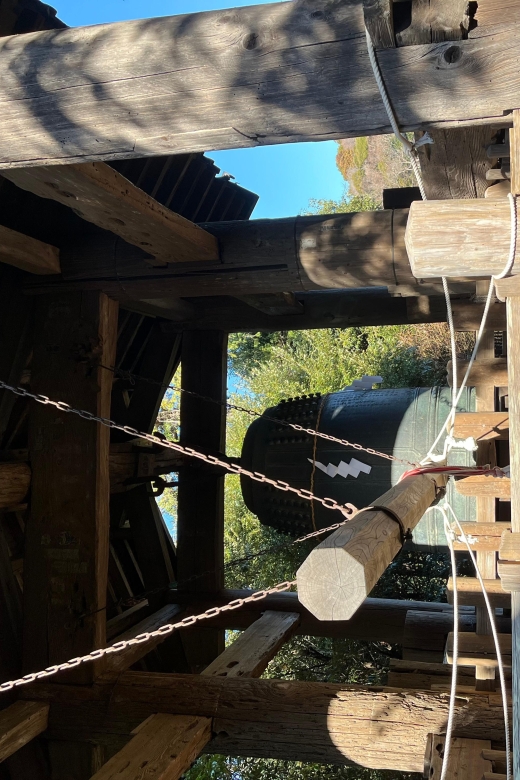
- This 3-hour walking tour explores the historic highlights of Kamakura, the first capital of the Samurai, with a small group led by an English-speaking guide.
- Visitors will discover important Rinzai-Zen temples like Enkaku-ji and Kencho-ji, including the national treasure Bonsho bell at Enkaku-ji.
- The tour includes a visit to the iconic Tsurugaoka Hachimangu Shinto shrine, accessed via the scenic 450-meter Dankazura walkway.
- Participants will learn about the 800-year-old traditional craft of Kamakura Lacquerware at the Kamakura Lacquerware Museum.
- The tour starts at Kita-Kamakura Station, easily accessible by the Yokosuka line, with a 2-minute walk to the first stop, Enkaku-ji temple.
Tour Overview
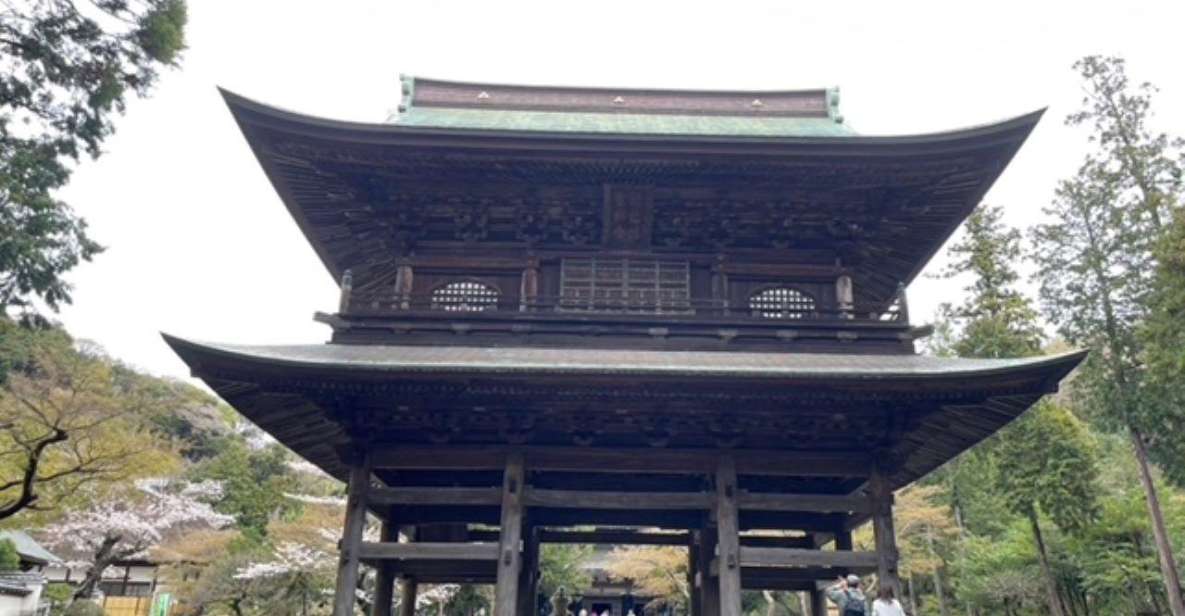
This 3-hour walking tour in Kamakura, the first capital of the Samurai, provides a small-group experience limited to just 5 participants led by a live English-speaking guide.
Together, you’ll explore the highlights of this historic city, starting at the serene Enkaku-ji temple with its magnificent Sanmon gate, Butsuden hall, and the climb up to the national treasure Bonsho bell.
Next, you’ll visit the prestigious Kencho-ji, the most important Zen temple in Kamakura. Along the way, you’ll stroll the picturesque 450-meter Dankazura walkway leading to the iconic Tsurugaoka Hachimangu shrine.
The tour also includes a stop at the Kamakura Lacquerware Museum to learn about this 800-year-old traditional craft.
With free cancellation up to 24 hours in advance, this immersive experience is a must for any visitor to Kamakura.
You can also read our reviews of more walking tours in Kamakura
Key Highlights
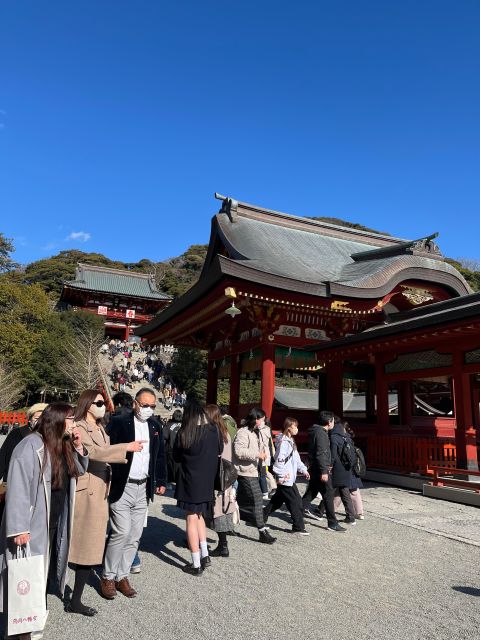
Visitors embark on a captivating journey through Kamakura’s rich history, starting at the iconic Tsurugaoka-Hachimangu shrine, the symbolic heart of the city’s first Samurai capital. They then explore the serene realms of two renowned Rinzai-Zen temples, Enkaku-ji and Kencho-ji, marveling at their architectural wonders and spiritual significance. Along the way, the tour unveils the enduring legacy of Kamakura Lacquerware, an 800-year-old traditional craft that has stood the test of time.
| Key Highlights | |
|---|---|
| Visit Tsurugaoka-Hachimangu | Symbol of the 1st Samurai capital |
| Experience Enkaku-ji & Kencho-ji | Important Rinzai-Zen temples |
| Introduce Kamakura Lacquerware | 800-year-old traditional craft |
| Climb to Bonsho (national treasure) | At Enkaku-ji temple |
| Walk through Dankazura | 450m walkway to Tsurugaoka Hachimangu |
Tour Activities

The tour commences at Kita-Kamakura Station, where visitors board the train carriage closest to the driver for the quick two-minute journey to Enkaku-ji temple.
Stepping into the ancient Zen temple, they’re immediately struck by the grandeur of the Sanmon Gate and the serenity of the Butsuden and Hatto halls. The true highlight, though, is the climb to the Bonsho bell, a designated national treasure.
Next, the group ventures to Kencho-ji, the most prestigious Zen temple in Kamakura. After exploring its historic structures, they stroll along the 450-meter Dankazura pathway to the iconic Tsurugaoka Hachimangu shrine.
The tour concludes with a visit to the Kamakura Lacquerware Museum, where they learn about this 800-year-old traditional craft.
Enkaku-ji Temple
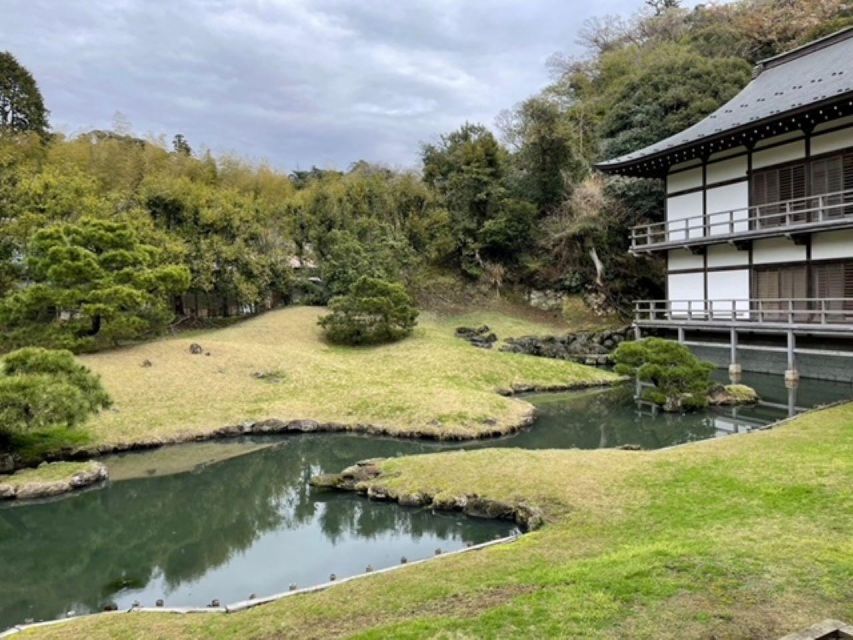
After disembarking at Kita-Kamakura Station, the group enters the ancient Enkaku-ji temple, immediately captivated by the grandeur of the Sanmon Gate that marks the entrance to this Zen sanctuary.
As they pass through the gate, the tour guide explains the history and significance of this 13th-century structure, its massive wooden beams and ornate carvings a testament to the skill of its builders.
The group then explores the Butsuden, the central hall housing a magnificent Buddha statue, and the Hatto, the sermon hall where Zen monks once gathered for daily practice.
More Great Tours NearbyKencho-ji Temple
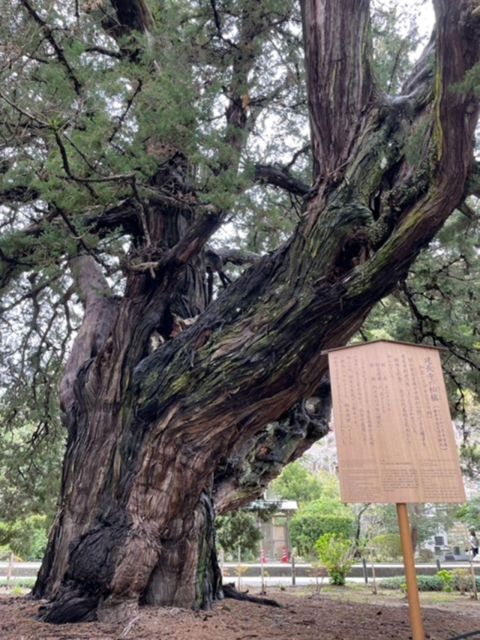
Next, the group makes its way to Kencho-ji, the most prestigious Zen temple in Kamakura.
Towering over the tranquil gardens, its impressive red-lacquered gate commands attention, hinting at the temple’s significance as a center of spiritual practice for centuries.
As they step through the gate, the serene atmosphere envelops them.
The group explores the ornate buildings, each with its unique architectural style and purpose – from the Hatto Hall, the heart of the temple’s religious activities, to the Butsuden, housing the principal Buddha statue.
Wandering the grounds, they learn about Kencho-ji’s rich history and its role in shaping Kamakura’s cultural landscape.
Tsurugaoka Hachimangu
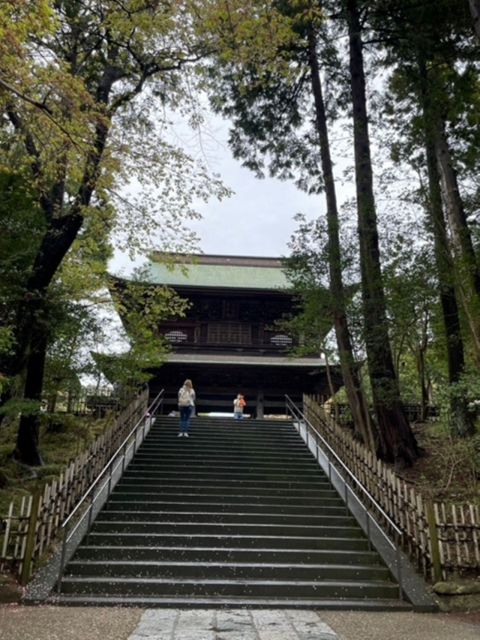
From the tranquil gardens of Kencho-ji, the group now makes its way along the 450-meter Dankazura, a beautiful tree-lined walkway leading straight to the iconic Tsurugaoka Hachimangu.
This Shinto shrine, dedicated to the revered samurai god Hachiman, was once the site of critical political and military events that shaped Japan’s history.
As they approach the shrine, the grandeur of its architectural design comes into view – the expansive torii gate, the commanding main hall, and the meticulously manicured grounds.
Visitors can almost feel the weight of that legacy as they ascend the stone steps and enjoy the serene atmosphere of this iconic landmark.
Kamakura Lacquerware
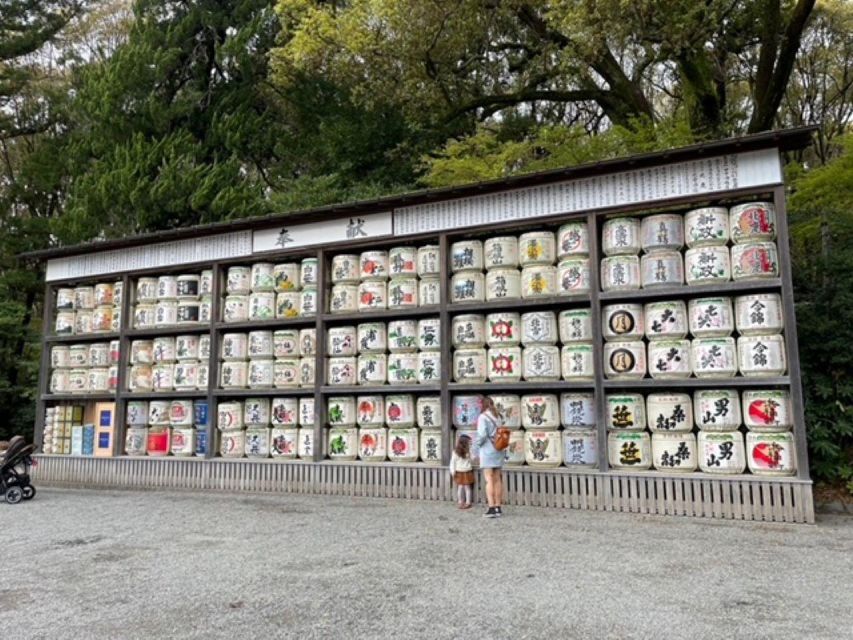
Exiting the hallowed grounds of Tsurugaoka Hachimangu, the group now enters the intimate Kamakura Lacquerware Museum, where an 800-year-old traditional craft comes to life through vibrant displays and skilled demonstrations.
The tour guide expertly navigates them through the museum’s galleries, revealing the intricate techniques and rich history of this revered artform.
Visitors marvel at the gleaming lacquer bowls, trays, and sculptures, each piece a testament to the patience and mastery of the artisans.
The guide explains how the lacquer, derived from the sap of the Japanese lacquer tree, is painstakingly applied, dried, and polished to achieve the lustrous, durable finish.
Captivated, the group lingers, eager to witness the creation of these timeless treasures firsthand.
Meeting Point
The tour begins at Kita-Kamakura Station, the east exit welcoming participants as they arrive for the walking exploration of Kamakura’s historic landmarks.
Easily accessible by the Yokosuka line, which is the only train that stops at this station, the platform stretches out impressively long.
Travelers should take note to board the carriage closest to the driver for a seamless start to the tour.
Key things to remember about the meeting point include:
- Kita-Kamakura Station, East exit
- Yokosuka line is the only train that stops here
- Platform is extremely long, so board the front carriage
- Just a 2-minute walk to the first stop, Enkaku-ji temple
Frequently Asked Questions
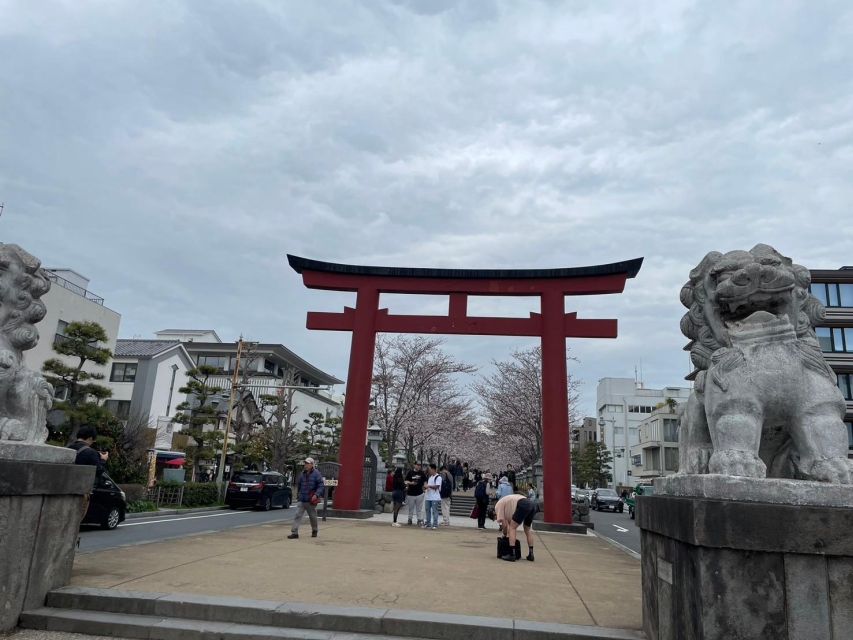
Can I Bring My Dog on the Tour?
Unfortunately, pets are generally not allowed on this walking tour. The tour itinerary requires navigating through crowded pedestrian areas and accessing temples, where animals are typically prohibited for safety and preservation reasons. The tour is designed for a small group experience.
Is the Tour Wheelchair/Stroller Accessible?
This tour may not be fully wheelchair or stroller accessible. Some sites have stairs, and the long walkway to the main shrine could pose challenges. It’s best to inquire with the tour provider about accessibility accommodations before booking.
Are There Any Restrooms or Places to Eat Along the Way?
The tour includes several stops where participants can use restrooms or grab a bite to eat. There are traditional tea houses and shops along the route, offering a chance to refuel during the 3-hour experience.
What Happens if the Weather Is Bad on the Day of the Tour?
If the weather is bad on the day of the tour, the guide will work to provide an indoor-focused experience, utilizing covered walkways and sheltered sites. They’ll ensure guests still get a fulfilling tour despite the inclement conditions.
Is There an Option to Extend the Tour Duration?
The tour doesn’t offer an option to extend the duration, but customers can inquire about adding extra time if they want to explore Kamakura further. The regular 3-hour experience is designed to provide a comprehensive introduction to the city’s top sights.
Recap
Discover Kamakura’s captivating history as the first Samurai capital on this immersive walking tour.
Explore iconic landmarks like the magnificent Tsurugaoka Hachimangu shrine and witness the creation of revered Kamakura Lacquerware.
With an expert guide by your side, you’ll uncover the city’s rich cultural heritage, from the majestic Bonsho bell to the serene Dankazura walkway, leaving you with a deep appreciation for this historic Japanese destination.
You can check availability for your dates here:More Walking Tours in Kamakura
- Kamakura One Day Walking Private Tour
- Walking Tour to Two Shrine and Temple in Kamakura
- 【Kamakura Highlights 5 Hour】Budget Group Walking Tour With Lunch
- 【Kamakura Zen – Private 5 Hour Walking】 Guided Tour With Lunch
- Kamakura Heritage Bike or Walk Tour With Ex-Rickshaw Guide
- 【3 Hour Private Walking Tour】 in Kamakura
More Tours in Kamakura
- Kamakura 6 Hr Private Guided Tour & Kimono Experience
- Kamakura Private Customizable Full Day Tour
- Private Tour of the Ancient Capital Kamakura From Tokyo
- First Time in Kamakura? Enjoy a Tour of All Must-Sees!
- Kamakura Tour With Pro Photographer: Anime Train & Fuji Sunset
- A Taste of Tradition Ofuna Kannon Temple and Japanese Sweet Tour
More Tour Reviews in Kamakura
- Kamakura 6 Hr Private Guided Tour & Kimono Experience
- Kamakura Private Customizable Full Day Tour
- Craft Your Own HANKO Name Seal Activity in Kamakura Japan
- Private Tour of the Ancient Capital Kamakura From Tokyo
- First Time in Kamakura? Enjoy a Tour of All Must-Sees!
- Kamakura Small Group Onigiri Making and Sake Tasting in Sake Bar
Not for you? Here's more nearby things to do in Kamakura we have reviewed
- Kamakura 6 Hr Private Guided Tour & Kimono Experience
- Kamakura Private Customizable Full Day Tour
- Craft Your Own HANKO Name Seal Activity in Kamakura Japan
- Private Tour of the Ancient Capital Kamakura From Tokyo
- First Time in Kamakura? Enjoy a Tour of All Must-Sees!
- Kamakura Small Group Onigiri Making and Sake Tasting in Sake Bar
- Kamakura Tour With Pro Photographer: Anime Train & Fuji Sunset
- A Taste of Tradition Ofuna Kannon Temple and Japanese Sweet Tour
- 3 Hour Japanese Culture Tour in Kamakura Temples
- Learning History of Kamakura in Depth With a Certified Guide
- Half-Day Tour to Seven Gods of Fortune in Kamakura and Enoshima
- Kamakura Private Guided Tour With Traditional Experiences
